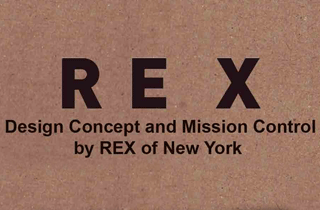In a few days from now (March 28, 2011) the Pritzker Prize Committee will announce the recipient of the 2011 prize. In anticipation of this momentous event, I have prepared a special note about the award.
If you are a starchitect with serious credentials working outside of the Americas, Europe or Japan and you are anxiously just sitting by the phone waiting for the Pritzker people to call you, first of all relax. I am about to show you why you should.
The Pritzker’s self-defined purpose is summed up in the following statement:
"To honor a living architect whose built work demonstrates a combination of those qualities of talent, vision and commitment, which has produced consistent and significant contributions to humanity and the built environment through the art of architecture"
I will first take issue with the underlined phrase significant contributions to humanity as significant is a relative word here: what is significant here is based on what is significant to a small group of like minded individuals in the upper echelon of the western world.
Contributions to humanity? how has the buildings of the past laureates contributed to humanity? Humanity? Okay maybe I have the wrong idea of what humanity is. Lets consult the dictionary.
Maybe, they meant “the humanities” as defined below:
The prize is awarded irrespective of nationality, race, creed, or ideology. Nominations are accepted internationally from persons from diverse fields who have a knowledge of and interest in advancing great architecture.
If the prize is given irrespective of nationality, race, creed, or ideology why does the make-up of recipients not reflect that?
See Charts below:
If you are a starchitect with serious credentials working outside of the Americas, Europe or Japan and you are anxiously just sitting by the phone waiting for the Pritzker people to call you, first of all relax. I am about to show you why you should.
The Pritzker’s self-defined purpose is summed up in the following statement:
"To honor a living architect whose built work demonstrates a combination of those qualities of talent, vision and commitment, which has produced consistent and significant contributions to humanity and the built environment through the art of architecture"
I will first take issue with the underlined phrase significant contributions to humanity as significant is a relative word here: what is significant here is based on what is significant to a small group of like minded individuals in the upper echelon of the western world.
Contributions to humanity? how has the buildings of the past laureates contributed to humanity? Humanity? Okay maybe I have the wrong idea of what humanity is. Lets consult the dictionary.
- all human beings collectively; the human race; humankind. [nope, can’t be that, this prize is certainly not considering all humanity. Just the western world me thinks]
- the quality or condition of being human; human nature. [not this either]
- the quality of being humane; kindness; benevolence. [okay, okay, maybe Norman Foster did it as seen here, but what about the rest? If this were the case, wouldn't have someone like Cameron Sinclear been on the laureate list a long time ago?]
Maybe, they meant “the humanities” as defined below:
literature, philosophy, art, etc., as distinguished from the natural sciences.
the study of literature, philosophy, art, etc.
The prize is awarded irrespective of nationality, race, creed, or ideology. Nominations are accepted internationally from persons from diverse fields who have a knowledge of and interest in advancing great architecture.
If the prize is given irrespective of nationality, race, creed, or ideology why does the make-up of recipients not reflect that?
- 73% Caucasian?
- 17% Japanese?
- all the other races combined 9%?
See Charts below:
 |
Though they did not mention gender its interesting to look at the gender break down as well: |
 |
| Age was not mentioned but also an interesting perimeter, the average age is 63: |
 |
| Regardless of ideology?, well unless you are responding or relating to modernism in some way, you are not getting the Pritzker. |
If nominations are accepted internationally from persons from diverse fields then I would imagine that the nomination pool would reflect that as well. If the nomination pool is wide and diverse and the results are homogeneous, then what does this say about the jury?
Well don't just make cruel and baseless assumptions. Lets take a look.
The independent jury of experts ranges from five to nine members. Jury members serve for multiple years to assure a balance between past and new members and are entrusted with selecting the laureate each year. No members of the Pritzker family or outside observers are present during jury deliberations which usually take place during the first months of the calendar year. The jury members are recognized professionals in their own fields of architecture, business, education, publishing, and culture.
Combining the 9 current members together with all the past members as listed on their website to date: March 2011, the jury make-up is as follows:
- 88.2% are Caucasian and male
- 11% are Japanese-Asian (all Japanese-Asian members were male as well)
- 11.8% were female
- To be fair, there was one non-Japanese Asian [Le Corbusier’s former apprentice in India Balkrishna Doshi], and he accounted for 2.9%
maybe a more accurate mission statement would have been
"a living architect, preferably a Caucasian or Japanese male, whose built work relates to modernism, demonstrates a combination of those qualities of talent, vision commitment, which has produced consistent
Otherwise, they would be statistically saying that South Asia, the Middle-East, or Africa have not produced any architects that demonstrate the qualities of talent, vision and commitment in the past 32 years.
With the exception of I.M. Pei, no architect outside of the Americas, Europe or Japan have produced consistent and significant contributions to humanity and the built environment through the art of architecture?
Is that so?
Really?
Lets break it down by country:
 |
| God Bless America! |
By Region:
 |
| Viva Europa! |
The official ceremony granting the award takes place every year, usually in May, at an architecturally significant site throughout the world. The choice of location of the ceremony reinforces the importance of the built environment while providing a unique setting for the ceremony. The presentation ceremonies move around the world each year, paying homage to the architecture of other eras and/or works by previous laureates of the prize. As the ceremony locations are usually chosen each year before the laureate is selected, there is no intended connection between the two.
This is a map of the cities that have hosted the ceremonies so far
Here are the percentages:
- 54.5% in North America
- 33.3% in Europe
- 6.1% in the Middle-East
- 3% in Central America
- 3% in North East Asia
Statistically speaking the committee has yet to find an architecturally significant site in the following regions of the world:
- Africa
- South-Asia : Indonesia, India, the Koreas, etc
- Central/Western-Asia: China
- Australia
Other gaping disproportionalities:
- only one architecturally significant site in all of South America
- 6 in Washington DC and 5 in Chicago alone
Trends:
Although I can not say with all certainty, the trend suggests that initially the plan was to have the ceremony in Washington DC, but after three years it started to move around within the borders of the United States. In 1986, for the first time the venue was hosted abroad in London, and a few years after that a loose pattern started to develop whereby the venue is rotated between the US and Europe. Last year, the venue was hosted in New York, so there is a reasonably good chance the next venue will be somewhere in Europe or another location abroad.
My Predictions:
This week we are most likely to see a caucasian male architect win the prize. He will most likely be an European, around the age of 62.97. His work will most likely have been strongly influenced by modernism, and he will most likely be presented the award somewhere on the European continent.
NOTES ON BECOMING A FAMOUS ARCHITECT
Liberating Minds Since August 2007
RELATED NOTES:




























































